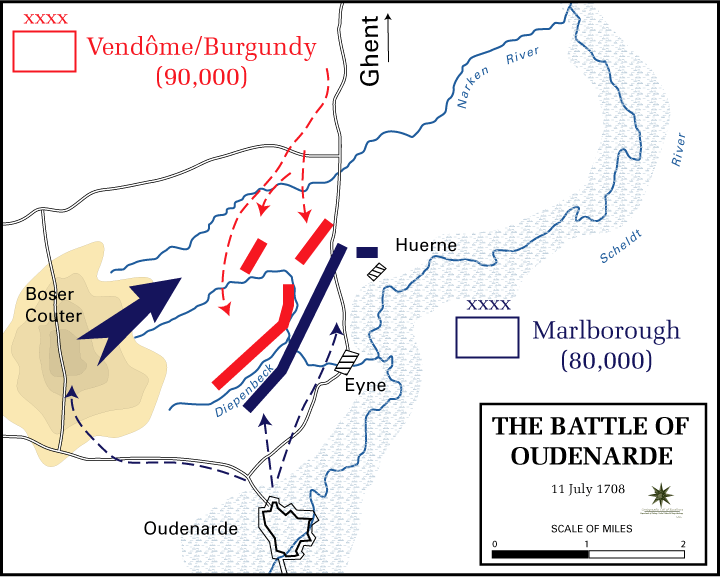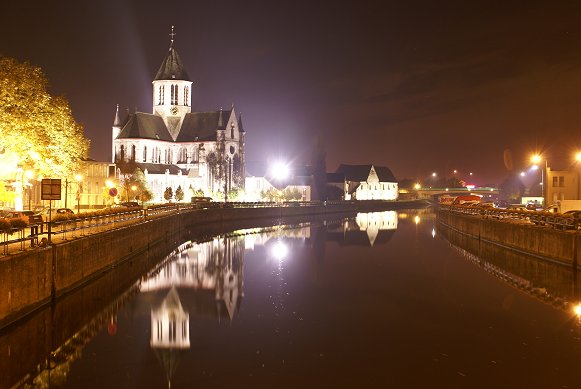The campaign began with Vendome near Mons and Marlborough near Brussels, but after some maneuvering, events transpired to the west in Flanders that attracted both armies. Unhappy with high taxes, Ghent and Bruges rebelled and joined the French. This posed a threat to Marlborough's communications. Oudenarde, south of Ghent and Bruges, interfered with French communication with the two cities. The French army, far from its base but now positioned between Marlborough and the Allied base in the Netherlands, marched west hoping to capture the fortified town. Since Oudenarde was now key to Allies' new line of supply to Ostend, Marlborough would fight to retain it. Fortunately, Prince Eugene had marched a small force from the Rhine and now joined Marlborough, giving the Allied force 80,000 men to counter France's 85-90,000.
On the morning of July 11th, as the two armies moved west, the Allies detected the French army crossing the Scheldt River. The Allies then began construction of a pontoon bridge near Oudenarde south of the French crossing. Around noon the Allies began to cross, then advanced to a small, marshy stream, the Diepenbeck, where they clashed with small parties of French. The French army was drawn forward, hoping to push the Allies back into the river. More Allied troops crossed the river, and the fight grew into a general action.







